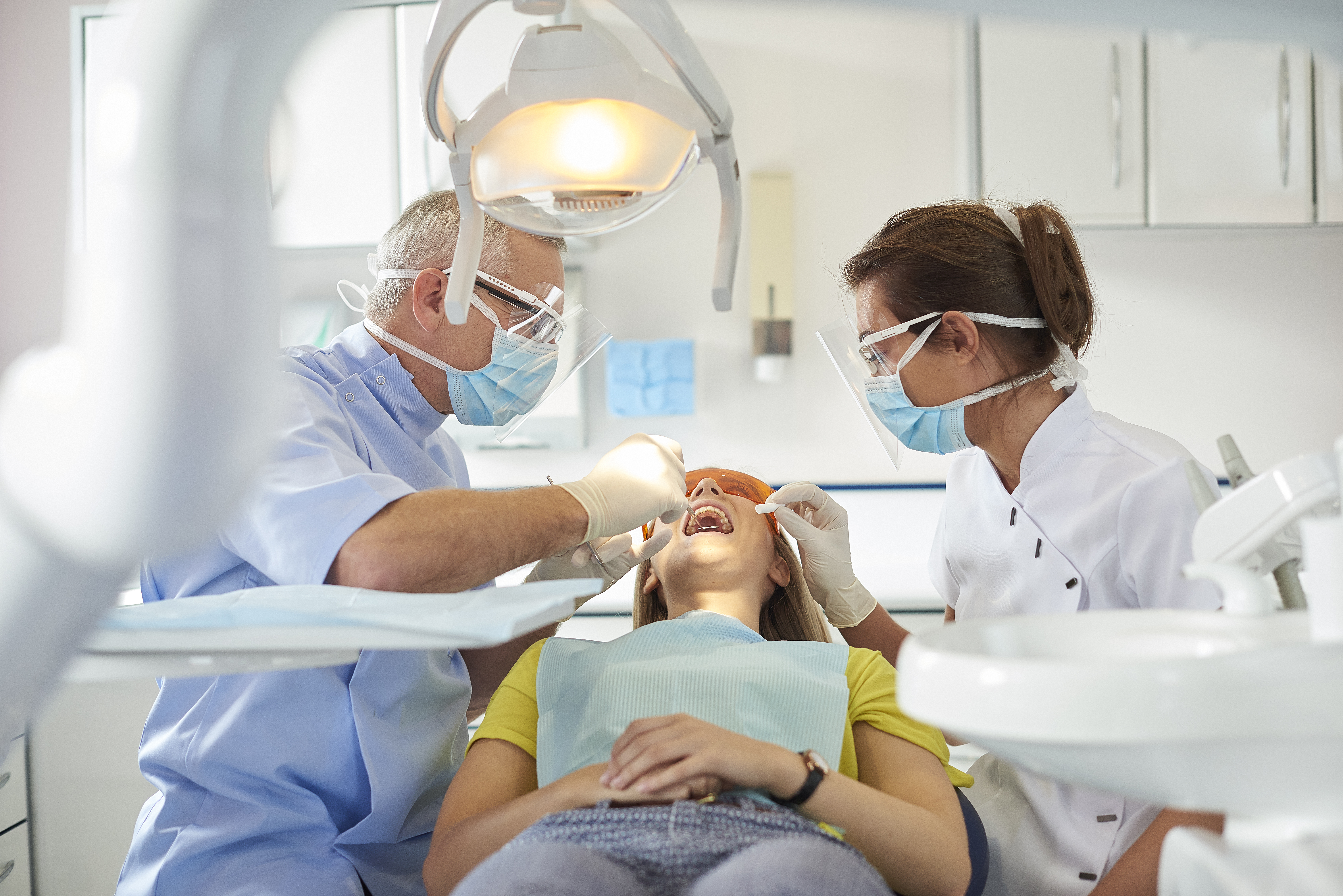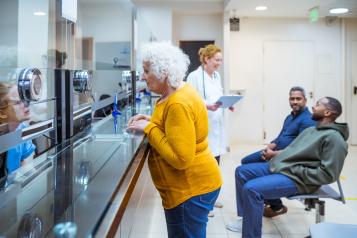What people living rurally have told us about their healthcare

Rural areas can be desirable places to live. People living in rural areas reportedly experience higher levels of wellbeing and longer life expectancy than those living in urban areas. A substantial proportion (17%) of the population of England live in rural areas.
And there is evidence that people living in rural areas have better access to doctors, pharmacists and dentists. The ratio of full-time equivalent (FTE) GPs to patients is higher in rural areas than in urban areas.
By 2037, a third of people over 85 will live in rural areas, compared to a quarter now. It's vital that services can meet the growing demand an ageing population is likely to cause. Here, we look at how easy it is to access healthcare for those living in rural areas, and what this might mean for future service planning.
Travelling to services
Services can often be further away in rural areas than in urban areas. Almost all people (95%) in urban areas had access to a GP within half an hour’s walk, compared to just 43% of people in rural areas. So people in rural areas have to make longer journeys to access healthcare services.
We have heard about long and costly journeys to access healthcare in rural areas. People who don’t drive have to rely on others for transport, use limited public transport services or pay hefty taxi fares. This is particularly hard for people affected by increases in the cost of living.
"There are no buses in our village and the doctor’s surgery is not in our village. I’ve been signed off driving, so I must rely on someone to take me. They lose wages, which I cover, as well as fuel and hospital parking. Unexpected trips to hospital doctors are putting us into debt. I won’t be able to afford to go to my next hospital appointments for a couple of months, which means with all the tests etc. I need, and with how poorly I am, a delay in diagnosing may well mean a delay in treatment.“ — Story shared with Healthwatch Gloucestershire.
People described the necessity of driving to access healthcare and other services. Some told us their worries about what would happen when they no longer drive.
“A couple in their 60s moved from one village to another about two miles away into a bungalow as they have mobility issues. But although they have kept the same GP surgery, they can no longer get medications delivered to their home. The husband drives now, but if he is no longer able to drive, how will they get their meds?” — Story shared with Healthwatch Bath and North East Somerset.
The cost and time taken to travel to secondary healthcare services is significantly longer than for doctors, pharmacists or dentists services. The average minimum travel time to a hospital was a little over one hour in rural areas, compared with a little over half an hour in urban areas.
“I’m 80, widowed and struggling. I do not have transport, and the village bus does not fit in with appointments. I am attending a 10-week balance class at the local hospital, and it costs £10 a week to get there on time, and two hours to wait for the bus to take me home.” — Story shared with Healthwatch Dorset.
People described dispersed services, which may not be delivered in the hospital nearest to them, necessitating longer and more difficult trips.
“I am made to travel to Darlington from Wolsingham, a 60-mile round journey. Durham is a 30-mile round trip. A postcode mess!” — Story shared with Healthwatch County Durham
Research by Healthwatch North Yorkshire described an urban-centric mindset among some healthcare providers, who didn't understand the effort people living in rural areas must make to access secondary care.

Accessing NHS dentistry
Access to NHS dentistry is particularly difficult in rural areas. Government statistics show that there were 50 dentists per 100,000 population in mainly rural areas, compared with 59 dentists in mainly urban areas.
Our feedback shows access to NHS dentistry has been poor since March 2020, particularly in rural areas. We heard about people spending years on long waiting lists for NHS dentistry. People also told us they're having to make exceptionally long trips to the nearest NHS dentist, pay for private treatment, or resort to self-treatment.
“The commentator has an awful toothache and is on benefits. All the NHS dentists in the area have closed. An emergency NHS dentist is a considerable distance away, and no public transport is available due to poor rural transport links. So she can't get there. She is trying to pick up the courage to pull the tooth out with pliers as she has no other option.” — Story shared with Healthwatch Somerset
Our analysis of the 2022 GP Patient Survey shows that people in rural areas may have worse experiences getting NHS dentistry than those in urban areas. In areas of the country with more rural areas1, a significantly2 higher proportion of people say:
- They couldn’t get an NHS dental appointment (29% in the most rural areas compared to 24% in the most urban areas)
- They didn’t have a good experience of NHS dentistry (34% in the most rural areas compared to 28% in the most urban areas)
- They were on a waiting list for NHS dentistry (4.4% in the most rural areas compared to 2.7% in the most urban areas)
The recently published NHS dental recovery plan sets out plans to tackle rural dentist deserts by providing dental access vans in some rural and coastal areas of England.
Choice in the type of appointments
Healthwatch England has previously called for patients to be able to choose the type of appointment that works best for them. In rural areas, this is important. In some rural areas, a remote appointment would avoid long, difficult, and costly journeys.
“The patient received a medical appointment for the Gynaecology department at Truro. The appointment was scheduled for a Sunday, so the patient incurred a 2-night stay, travelling over the day before the appointment and returning the day after the appointment. At the appointment, the patient was informed by the consultant that the appointment could have been offered remotely, negating the time and cost involved with travelling over.” — Story shared with Healthwatch Isles of Scilly
In other rural areas, remote appointments aren’t suitable where broadband and mobile coverage is patchy. Research by Ofcom shows that only 89% of rural premises have access to superfast broadband, compared to 99% of urban premises. Indoor mobile coverage is between 73 – 83% in rural areas, compared to 96% in urban areas.
“It’s very hit and miss as to whether you can get an appointment. If you do, it’s nearly always telephone and despite being asked to use the landline number, the doctor calls on the mobile. The signal here is dreadful so mobile connection is poor and not good enough to discuss symptoms etc with a GP.” — Story shared with Healthwatch Herefordshire
Our recommendations:
Travelling to services
- Councils should work with local health providers when making decisions on public transport to facilitate public access to remote health providers.
- NHS England, Integrated Care Boards (ICBs) and hospital trusts should do more to raise awareness of transport support and financial help with travel.
- NHS England must reopen its review of the health travel cost scheme to speed up reimbursement for those eligible.
- Transport support schemes should be extended to cover primary and community care and hospital appointments.
- NHS England should work with ICBs to improve the implementation of the non-emergency patient transport service (NEPTS) review. This includes making sure support is available for all patients travelling to and from renal dialysis appointments.
- NHS England should support NHS trusts in considering further reducing the costs of parking charges.
Access to NHS dentistry
- Integrated Care Boards (ICBs), which are responsible for commissioning NHS dentistry, should keep the public informed about if and when mobile dental vans will be coming to their areas, after the government’s Dental Recovery Plan announced that vans would be deployed in 11 rural and coastal areas this year.
- ICBs should consult with local Healthwatch and councils about which parts of communities are experiencing poor access to NHS dental services and target provision accordingly.
Choice in the type of appointment
- GP practices and hospitals should inform patients of alternative modes of appointments, like video call or telephone, and provide clear instructions ahead of time on how these will work.
Loss of local services
- Council-led Health and Wellbeing Boards must ensure they are reviewing local pharmacy provision if changes such as closures affect access in rural areas. This should happen in addition to the mandatory pharmaceutical needs assessments they're required to carry out every three years.
- Integrated Care Boards (ICBs), which are responsible for overseeing pharmacy services, should publicise the availability of distance-selling and/or online pharmacies that can process NHS prescriptions and send medication out to people by post. There are rules to protect public safety about online pharmacies, including displaying a logo showing they are registered.

Get the latest insight
Stay up to date with what people are telling us about health and social care.
Footnotes
- For our analysis, each ICB was assigned a % urban score by mapping UK Composite Rural Urban Classification data at the LSOA level to the LSOA (2011) to Sub ICB Locations to Integrated Care Boards (July 2022) Lookup provided by the Office for National Statistics. We then combined our % urban scores with ICS-level GP Patient Survey data.
- All results significant at p=<0.05 using regression analysis.

